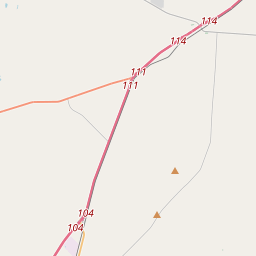Moore Cemetery
Historical marker location:






First public burial ground in community. Before its founding people were buried in private plots, church cemeteries, or in public graveyards outside this precinct. In 1896 Moses Veith deeded five acres of land for use as a community cemetery. Interred here are pioneers and men who fought in Indian battles, World Wars I and II, and other major conflicts. Moore was named for early Texas R. B. "Mustang" Moore, who lived on a small creek near here. In 1861 he was killed by Comanches. The town was first named Moore Hollow.
(1970)
As one of the most visible programs of the Texas Historical Commission (THC), historical markers commemorate diverse topics in Texas history, including: the history and architecture of houses, commercial and public buildings, religious congregations, and military sites; events that changed the course of local and state history; and individuals who have made lasting contributions to the state, community organizations, and businesses.
The University of Texas at Austin, founded in 1883, is one of the largest universities in the United States and has produced many notable alumni, including several U.S. presidents.
The arrival of Spanish explorers in the 17th century brought significant changes to the region. Spanish missionaries established settlements and began introducing Christianity to the Native American tribes. One such settlement was the San Agustín de Laredo Presidio, which was founded in 1755 and served as a military outpost to protect Spanish interests in the area.
During the 19th century, Frio County experienced its major period of settlement. In 1858, the first Anglo-American families began to arrive, attracted by the fertile land and the potential for agriculture. The county was officially established in 1858 and was named after the Frio River, which runs through its western portion.
The discovery of oil in the early 20th century brought further development and prosperity to Frio County. Oil fields were established in the area, attracting workers and boosting the local economy. Today, Frio County is known for its oil and gas production, as well as its agricultural activities such as ranching and farming. The county continues to thrive, blending its rich history with modern industry and a strong sense of community.
Frio County Timeline
This timeline provides a condensed summary of the historical journey of Frio County, Texas.
- 1858 - Frio County is established from portions of Atascosa, Bexar, Uvalde, and Webb counties.
- 1868 - The first post office is established in Frio City.
- 1878 - The county seat is moved from Frio City to Pearsall.
- 1880 - The Southern Pacific Railroad is extended into Frio County, boosting economic growth.
- 1900 - The population of Frio County reaches over 7,000 residents.
- 1911 - A major flood causes significant damage to the county.
- 1927 - Frio County suffers from another devastating flood.
- 1934 - The Civilian Conservation Corps establishes Camp F-2 Company 1827 at Frio County Airport.
- 1940s - The discovery of oil and gas leads to increased economic activity in the county.
- 1990 - The population of Frio County exceeds 12,000 residents.
- 2010 - Frio County celebrates its 150th anniversary.